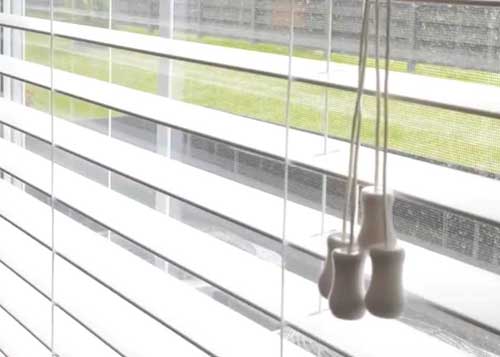
If you are a parent, chances are you have used or will use a baby gate at some point. Baby gates are designed to help protect young children from stairs and other dangers around the home. If you use these in your home, take note. A new study from researchers in the Center for Injury Research and Policy at Nationwide Children’s Hospital has found gates can lead to injury if used incorrectly.
The study, published in the May-June print issue of Academic Pediatrics, is the first nationally representative study to examine injuries associated with these gates. From 1990 through 2010, emergency departments in the United States treated an estimated 37,673 children younger than 7 years of age for baby gate-related injuries. That is an average of 1,794 per year, or about five injured children per day.
More than 60 percent of the children injured were younger than 2, and they were most often injured by falls down stairs after a gate collapsed or when it was left open, leading to soft tissue injuries like sprains and strains and traumatic brain injuries. Children aged 2-6-years-old were most often injured by contact with the gate itself after climbing on it, which can lead to cuts.
“Baby gates are essential safety devices for parents and caregivers, and they should continue to be used,” said Lara McKenzie, PhD, the study’s co-author and a principal investigator in the Center for Injury Research and Policy at Nationwide Children’s Hospital. “It is important, however, to make sure you are using a gate that meets the voluntary safety standards and is right type of gate for where you are planning to use it.”
Dr. McKenzie recommends parents think of pressure-mounted gates as products that should only be used as room dividers or at the bottom of stairs because those kinds of gates are not designed to withstand much force and will not prevent a fall down stairs. For the top of the stairs, only gates that have hardware, which needs to be screwed into the wall or railing, will be strong enough to prevent a child from falling down the stairs.
The fact that the rate of injury associated with this safety product nearly quadrupled during the time period covered by the study, going from 3.9 per 100,000 children in 1990 to 12.5 per 100,000 children in 2010, shows more can be done to prevent these types of injuries. Study researchers recommended a combination of efforts to educate families on correct ways to use gates and changes in gate design to reduce these types of injuries.
Dr. McKenzie, who is also a faculty member at The Ohio State University College of Medicine, said that while voluntary standards issued by the American Society for Testing and Materials have helped decrease baby gate hazards, making the standards mandatory and expanding which aspects of the gates are covered by the standards would improve the safety of these types of products.
“Current standards are voluntary and concentrate on things like the size of the openings, height, vertical strength, bottom spacing, configuration of the uppermost edge and label warnings,” Dr. McKenzie said. “While these are important, making them mandatory and adding standards to address designs that limit children’s ability to climb gates, prevent gates from collapsing, and provide better cushion to children if they fall on the gate would prevent many of the injuries we saw in our study.”
Parents and caregivers can also follow these tips to help reduce injury:
• Use hardware-mounted baby gates at the top of stairways. Gates that only press against walls, called pressure-mounted gates, are not secure enough to prevent falls.
• Install gates in homes with children between 6 months and 2 years of age.
• If possible, remove the gates when the child turns 2, or when the child has learned to open the gate or climb over it.
• If removing a gate is not possible because of other children in the home, use a gate without notches or gaps that could be used for climbing.
Data for this study were obtained from the National Electronic Injury Surveillance System (NEISS), which is operated by the U.S. Consumer Product Safety Commission. The NEISS database provides information on consumer product-related and sports- and recreation-related injuries treated in hospital emergency departments across the country.
The Center for Injury Research and Policy (CIRP) of The Research Institute at Nationwide Children’s Hospital works globally to reduce injury-related pediatric death and disabilities. With innovative research at its core, CIRP works to continually improve the scientific understanding of the epidemiology, biomechanics, prevention, acute treatment and rehabilitation of injuries. CIRP serves as a pioneer by translating cutting edge injury research into education, policy, and advances in clinical care. For related injury prevention materials or to learn more about CIRP, visit www.injurycenter.org.
Watch experts from Nationwide Children’s explain the study’s results and give tips for preventing baby gate-related injuries.





